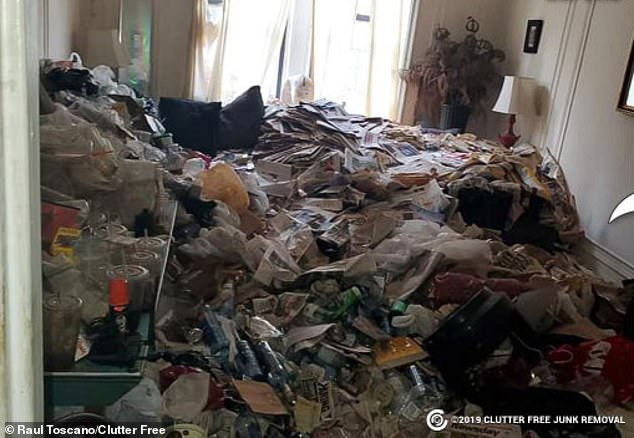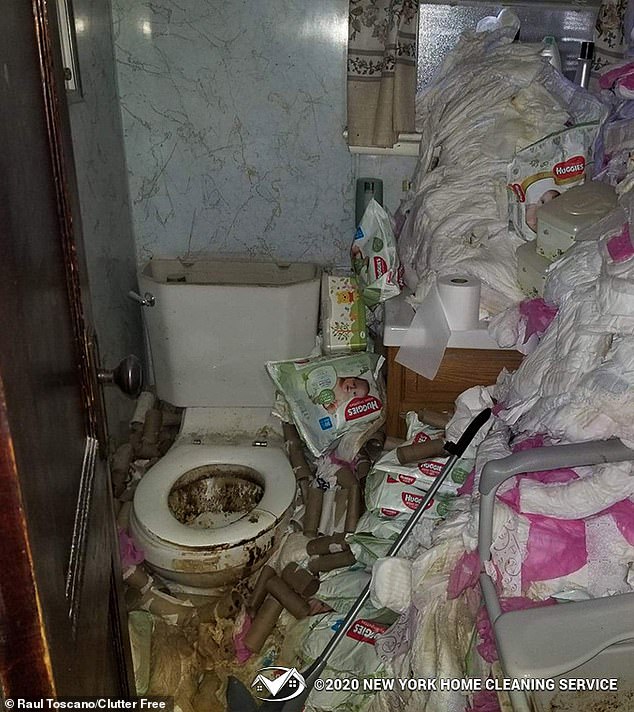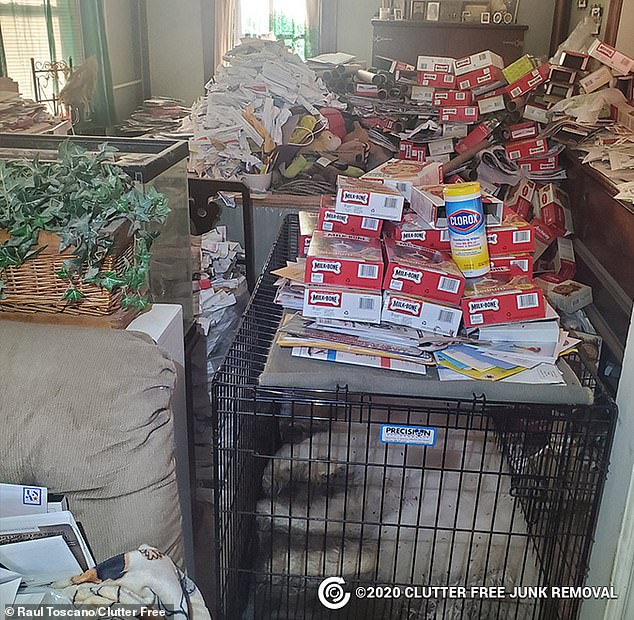Experts say they’ve seen a rise in one particular compulsive tendency since the Covid pandemic
Hoarding has become increasingly common during the Covid pandemic and experts blame a combination of fear, sadness and the convenience of one-click shopping.
More extreme than the tendency to hold on to a few trinkets for sentimental value or stock up on a few extra packs of toilet paper, hoarding behavior is often a symptom of more serious anxiety or an obsessive-compulsive issue.
Before the Covid-19 pandemic gripped the world, between two and three percent of the world’s population were obsessive hoarders. But that percentage is assumed to be rose by four percent since spring 2020.
Cleaning crews bravely walking through crowded apartments often collect hundreds, if not tons, of trash. It is also not uncommon to uncover long-dead pets and human feces.
People who struggled with mental health issues like OCD before the pandemic saw their symptoms worsen when much of society went into extended lockdown and suddenly found themselves without easy access to treatment and support from loved ones.

A cleaning crew focused on hoarding took a photo of empty food containers, bottles, newspapers and trash piled waist-high in the living room of an elegant antebellum apartment building in New York City

They found hundreds of used toilet paper rolls, baby wipes and trash making the bathroom of this chic apartment inaccessible
Psychiatrists have classified hoarding disorder as a separate diagnosis, although it has traditionally been considered a form of obsessive-compulsive disorder, which affects roughly 2.5 million adults, or 1.2 percent of the U.S. population.
In the early stages of the pandemic’s outbreak, when the new virus and where it came from were still shrouded in mystery, the world was forced into mandatory quarantine periods when it seemed as if a large part of people’s lives were suddenly out of their control lay.
Dr. David Nathan, a psychologist at Minneapolis-based Allina Health, told UPI, “As the pandemic has been a very difficult experience for everyone involved, we saw an increase in all stress responses, and that includes an increase in hoarding behavior.”
Hoarding disorder usually begins to manifest during adolescence and snowballs from there.
Severe hoarding is therefore more common in older adults than in younger adults.
Although hoarding is the diagnosis itself, its links to OCD have long been known.
And the rates of OCS deteriorated significantly during the pandemic. A study conducted in Spain found that 40 percent of people with OCD had more severe symptoms during the pandemic.
A similar study in Denmark reported that more than 61 percent of people had worse symptoms.
The mainstream media is no stranger to hoarding horror stories about discovering tons of garbage, rotting food, human feces, and even dead animals in hovels that are no longer safe for people to live there.
Hoarding is a major fire hazard and many people who cannot escape die in their homes.
According to the National Fire Protection Association: ‘Often blocked exits prevent an escape from the house.
In 2014, a firefighter died in a fire at a Brooklyn apartment that was so crowded he could barely open the door.
In addition, many hoarders are injured when they trip over things or when materials fall on them.’
Hoarding also poses fall risks, especially dangerous for seniors.

It is not uncommon for hoarders to collect animals thinking they are doing them a favor. In reality, these environments are not suitable for animals. The cleaning crew discovered a dead husky in his suitcase in a swanky New York apartment building
In 2020, the owner of a chic Park Avenue apartment was found dead in a shack full of collected junk, from books to old computers. Presumably he had tripped over the tons of rubbish.
In another case, shortly afterwards, a cleaning crew responded to a problem at an Upper West Side apartment, also in New York City, where they were shocked to find a dead husky in its crate that had been decomposing there for at least eight months used to be.
In some cases, people hoard animals, believing that giving them a roof over their heads is doing them a favor, when in reality they are left worse off, deprived of veterinary care and food, and forced to live in appalling conditions .
Mental health professionals have said that dealing with hoarding behavior goes far beyond throwing out hundreds of pounds of trash.
It requires treating the underlying drivers of the behavior, including a history of living with a hoarder, anxiety and compulsive problems, or procrastination or avoidance behavior.
